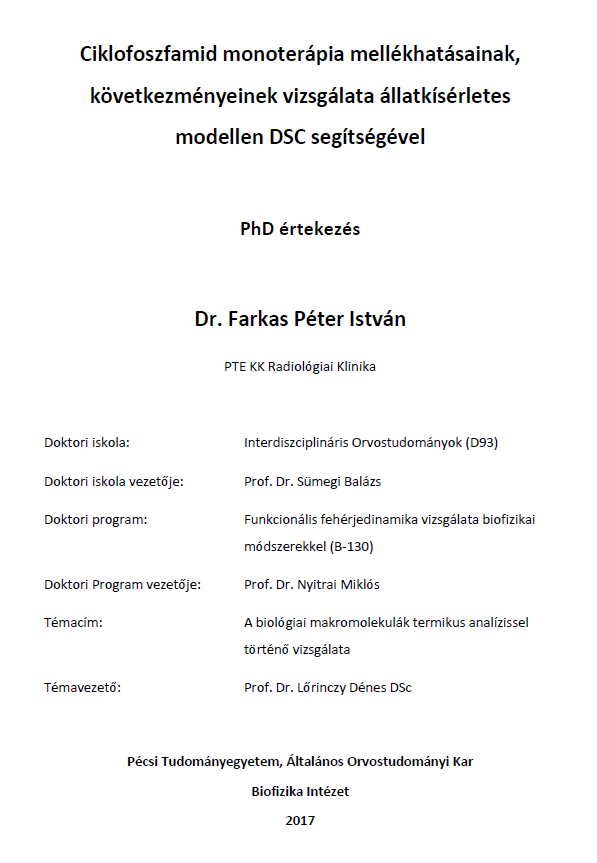Ciklofoszfamid monoterápia mellékhatásainak, következményeinek vizsgálata állatkísérletes modellen DSC segítségével
Abstract
In the 21st century, throughout developed countries, cardiovascular diseases are
followed by malignant tumors as the second leading cause of death. According to the data of
the Central Statistical office, while cardiovascular diseases as the cause of death show a
minimal declining trend, on the other hand, in contrast, the second most frequent cause of
death, is the incidence of malignant tumors, of which, today, illustrates a slight upward
trend.
Due to the above tendencies, an increasing emphasis is placed on the cure and
treatment of tumorous diseases. In the overwhelming majority of malignant spatial
processes, the principal objective is the first in consideration of the total excision of the
lesion. Unfortunately, in many cases, it is not possible, thus, irradiation, radiotherapy and
chemotherapy play a key role depending on the characteristics of the tumor. Strikingly, both
options possess risk, including serious side effects.
Determining the proper dose during chemotherapy is mostly based on an improved
method or in the consideration of developing international recommendations and
standards. However, with respect to individualized, patient-tailored dosage, the specified
treatment is not possible. In considering the pharmacokinetics of most medications and
chemotherapeutic agents, which are influenced partially on a genetic basis or partially upon
the current general wellbeing of the patient, the same dose may have a vastly different
effect on over a wide spectrum of patients.
Cyclophosphamide was chosen for our study as similar to oncotherapy; it plays a
prominent role throughout other disease groups, mostly in immunology, and is widely used
as a part of prolonged therapy. It is also applied in dermatology and pulmonology, although
with significantly less impact. Due to this, the characteristics of the potential side effects
play a major role, and hopefully, clinical fields of research may soon benefit from the result
of our experiments.
The importance of cyclophosphamide is suitably demonstrated, as it is included in
the WHO list of essential medicines (2015 April).

